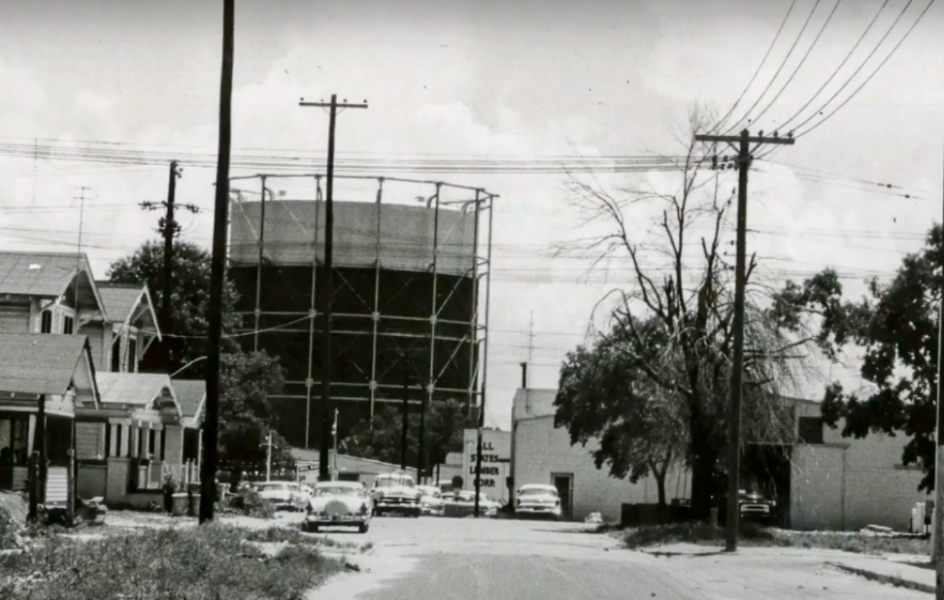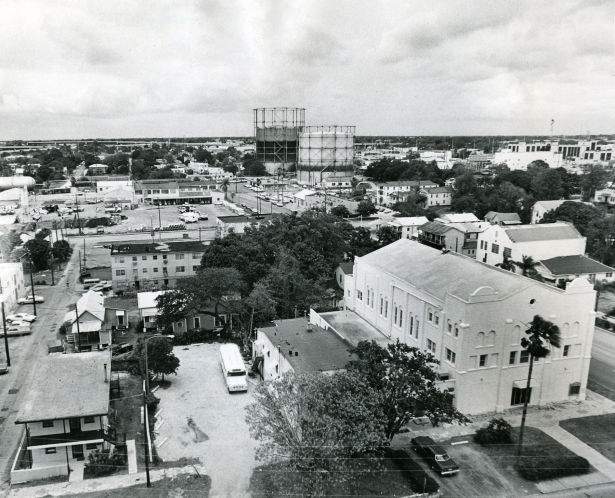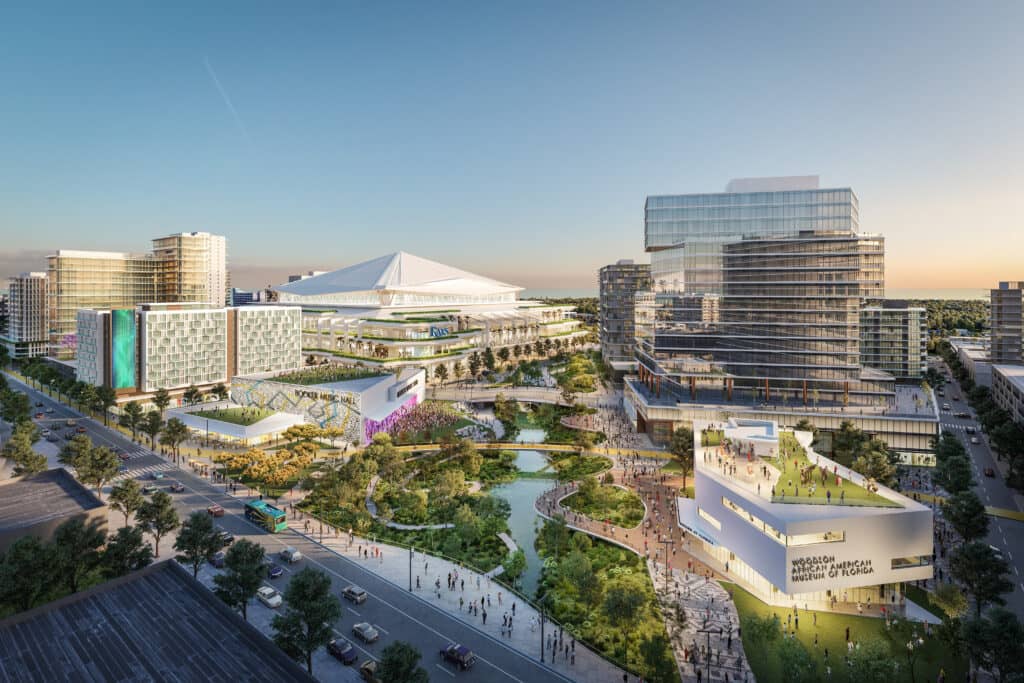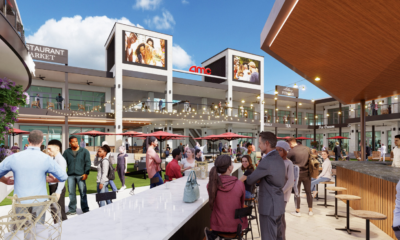Thrive
Rays leadership listens to Gas Plant descendants

Before the Tampa Bay Rays organization submitted its proposal to redevelop the Historic Gas Plant District, they invited several descendants from families displaced in the name of progress to dinner.
The intent of the Nov. 29 meeting was not to make bold promises early in a long process but to respectfully listen to the people most knowledgeable on the subject. Local historian Gwendolyn Reese, president of the African American Heritage Association of St. Petersburg, attended the informal dinner alongside about 15 people with direct ties to the hundreds of families relocated in the city’s pursuit of Major League Baseball.
The latest request for proposals to redevelop 86 acres of prime real estate garnered four submissions. To Reese’s knowledge, the Tampa Bay Rays group – represented at the dinner by team presidents Matt Silverman and Brian Auld – were the only ones to seek input from Gas Plant families.
“I can’t say for sure, but the ones we were in touch with did not indicate that anyone else had reached out to them,” said Reese. “I’m thinking they would have said something, but they didn’t.”
When many people think of the Tropicana Field redevelopment site, they see an old dome and sprawling parking lots – reminiscent of stadium locations from previous decades. As Reese noted, however, the area known as the Gas Plant District was a sanctuary for thousands of Black residents.
Following desegregation, things began to change. By the 1980s, the city started razing an area Reese called sacred to make way for Tropicana Field. According to Rosalie Peck and Jon Wilson’s book St. Petersburg’s Historic African American Neighborhoods, workers bulldozed 285 buildings, over 30 businesses closed or moved, and city officials forced 500 households and nine churches to relocate

The Gas Plant Neighborhood was razed in the 1980s to make way for Tropicana Field. File photo.
Reese, who spent much of her early years in the area, said Silverman and Auld respectfully listening to those displaced descendants is a step in the right direction – and one not often taken.
“It means a lot because it says they genuinely care,” said Reese. “They genuinely want to know more about what happened to the people there. They genuinely want our involvement, in some capacity, in the process and the future of what happens in that space.”
The area is sacred in the literal sense, explained Reese, as the ‘Trop sits on three former cemeteries. City officials moved the bodies in the 1950s, but ground-penetrating radar revealed at least three possible gravesites under the stadium’s parking lots last year.
In addition, she noted the district was a haven from life in St. Petersburg during the Jim Crow era. It was a place where Black residents could live, work, play and thrive without signs instructing them where they could eat, drink or sit.
“In our community, in the Gas Plant neighborhood, we were safe,” said Reese. “We had that respect. We had our dignity.”
She relayed that Silverman and Auld were “blown away” by the stories and spent much of their time just listening and acknowledging the history behind their home field. Reese believes attendees felt heard and respected.
She stressed the importance of descendants feeling like what they had to say mattered to local leaders. For over 40 years, no one seemed to listen or care, she added.

A map highlighting the Gas Plant District and other historical Black neighborhoods. Screengrab: YouTube.
Before the dinner and after much introspection, Reese decided to join the Rays’ redevelopment team as an advisor. She said the organization and another group reached out to her, but she was initially uninterested in joining.
After conversations with both, Reese said she finally decided she could benefit her community by participating in the process. She added that she chose the Rays after sensing a level of honesty, authenticity and integrity through several discussions with Auld.
“I posed some very difficult questions to him,” said Reese. “What I felt was that I was hearing some very honest responses.”
She relayed that Auld and Silverman gave an informal presentation without many site specifics at the onset of the meeting. Reese said attendees would consider any promises disingenuous this early in the process.
She said much of the conversation focused on preserving the Gas Plant’s history. They discussed naming a library after Helen Edwards, a longtime librarian in the area. Other buildings could follow suit.
Attendees proposed bringing back the names of old Gas Plant streets. Reese said they also favored the idea of a local heritage trail – similar to the one her organization brought to the area surrounding 22nd Street South.
Reese explained that people often identify a problem in the African American community and adopt a solution without ever seeking its input. “And then it fails, and they wonder why,” she added.

Tampa Bay Rays’ rendering of its proposed redevelopment of the Trop site. Image provided.
Another critical topic discussed at the dinner was economic equity, which Reese explained means giving more to uplift overlooked populations. For example, Reese said, many relocated families couldn’t afford to live in their new neighborhoods and ended up homeless.
She expressed that economic equity could take many forms. Those include ensuring a percentage of minority contractors, workforce and affordable housing, entrepreneurship opportunities and a small business incubator.
“How do you possibly assist someone who is a descendant or former resident who may want to live in that area?” Reese asked rhetorically.
She noted that city officials assured former residents the original redevelopment would provide housing and employment opportunities. Instead, they got a baseball stadium.
Any mitigation of broken promises, said Reese, begins there.
She realizes the latest redevelopment cannot solve employment or housing problems, nor will it eliminate persistent structural racism and disparities. However, if done correctly, she believes it is a much-needed first step towards acknowledgment – something lacking in the city and nation.
“You really can’t move forward until you acknowledge what was done,” said Reese. “It can’t solve any of those problems, but it can be a model for a process where we can continue to address those issues.”








Shirley Hayes
December 14, 2022at8:56 pm
Mr. Blommeart, when they decided to relocate us, there was no thought nor discussion about a baseball team. We believe that they wanted to expand downtown and we were in the way. The stadium idea came years after the area was demolished.I am convinced that they never intended to honor promises made to us to get us to move.
Richard Philip Blommaert
December 13, 2022at5:30 pm
The redevelopment of the gas plant area was more a case of “urban redeployment” than the search for a major league baseball team. Demographically, the Gateway area made more sense.Currently, a sports stadium makes even less sense. A little more history: The “gas plant” area was originally the site of the town dump. Redevelopment must take into account that much of the area is a “brownfield”.